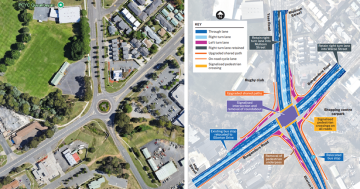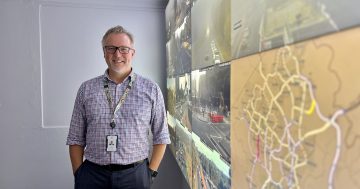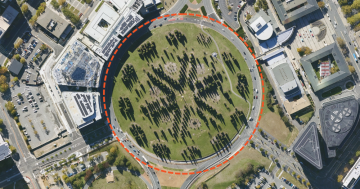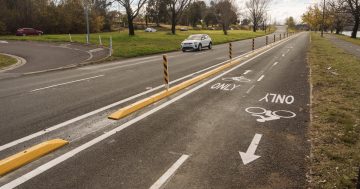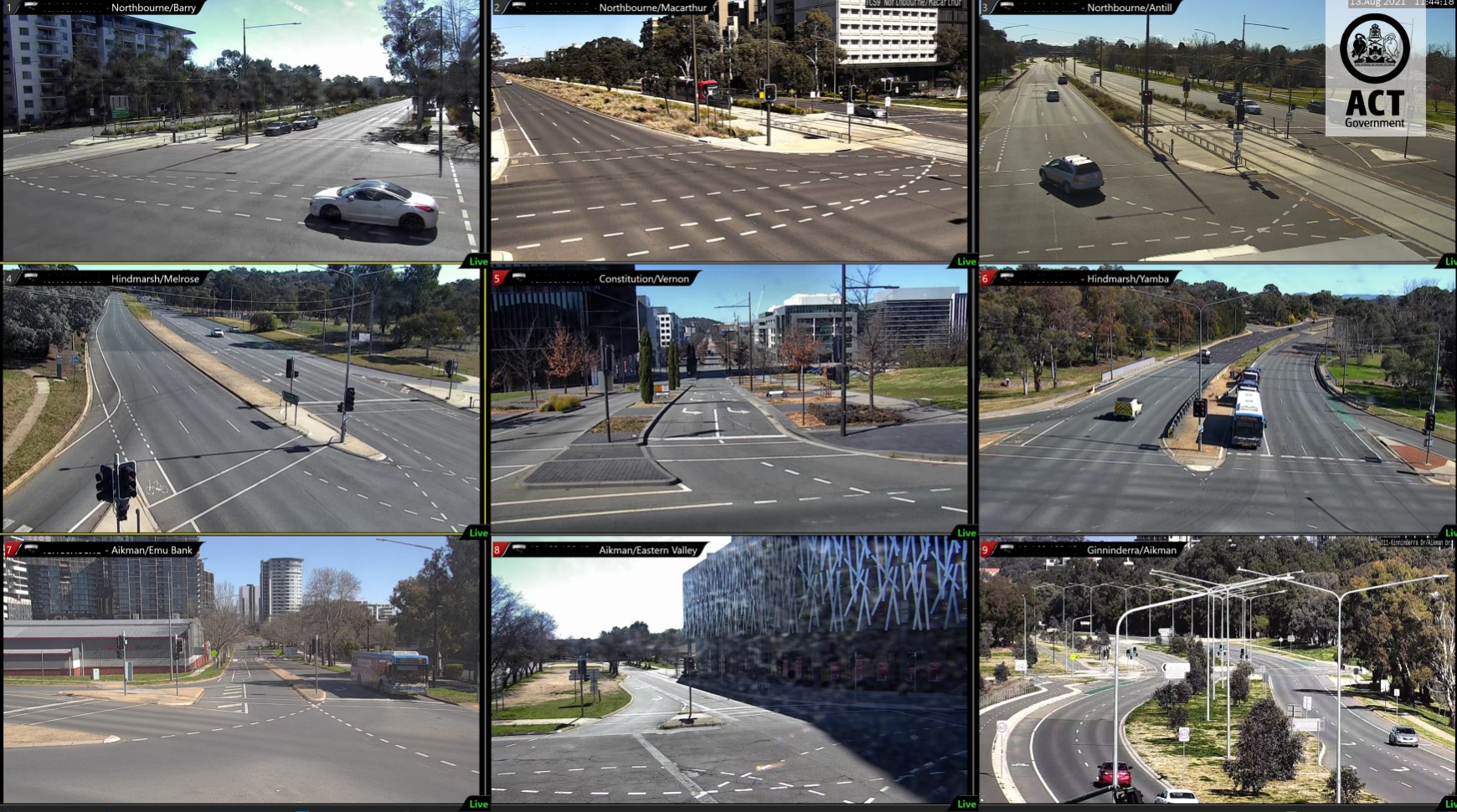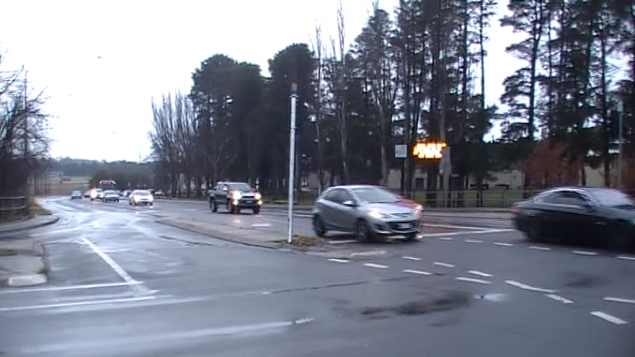
Part two of why Canberra needs transit lanes.
Only one of the four lanes on Flemington Road is fully-used by morning peak traffic.
Turning the first sod for Capital Metro’s Mitchell depot, Transport Minister Meegan Fitzharris said on 12 July that “the project demonstrates the ACT Government’s commitment to addressing congestion now, rather than waiting until the city is gridlocked.”
That billion dollar Capital Metro project will eventually reduce congestion. Its Environmental Impact Statement estimates that by 2031 it will reduce Gungahlin-Civic-Gungahlin peak car commute times by eleven minutes, compared with doing nothing. But in 2021 it will add three minutes to base commute times.
The Minister can address congestion now by fixing the bottleneck at the intersection of Flemington Road and Northbourne Avenue. She can fix this bottleneck by putting T2 signs along 150 metres of the Flemington Road busway.
This T2 lane can cut up to three minutes from car commute times. It will also cut bus travel times if it is combined with a T3 lane near the former Northbourne Avenue Visitor Information Centre, as I explained in Part One. Even more bus time can be saved by transit lanes on the Northbourne Avenue approaches to Antill, Ipima, and Girrawheen Streets
The bottleneck
At the end of the Barton Highway, one kilometre from Flemington Road, fifty vehicles pass through in the two lanes that turn right into Northbourne Avenue, during the minute that the right turn arrows remain green.
But in the same period only forty vehicles pass through the two right turn lanes at the end of Flemington Road. Extra vehicles that arrive along Flemington Road progressively bank up as far as Sandford Street in Mitchell, adding as much as three minutes to the time it takes to drive the 1.3 kilometres from there to Northbourne Avenue.
The Flemington Road intersection could accommodate fifty right-turning vehicles, if twenty-five vehicles could queue up in each of two lanes. One of those lanes is currently only long enough for eight vehicles. The result, as shown in the photo above, is that only one of the two right turn lanes operates close to its capacity.
A T2 lane can fix it
The rightmost turning lane will operate at full capacity if traffic in the single lane from Mitchell is directed into it.
A T2 lane will allow the intermediate turning lane, between the rightmost turning lane and the bus lane, to also operate at close to full capacity. The intermediate turning lane currently accommodates eight vehicles. Seventeen or more additional vehicles – cars with passengers, buses, taxis, motorcycles, left-turning vehicles, and drivers who risk being fined – will be able to queue in the T2 lane, move smoothly into the intermediate lane, and turn right into Northbourne Avenue while the lights are green.
Even if fifty vehicles arrive while traffic lights are red, they will all be able to get through while the lights are green, without causing a traffic backup.
The time savings offered by each transit lane will encourage more car drivers to become car or bus passengers. Each driver who becomes a passenger will reduce congestion at every intersection along the route.












